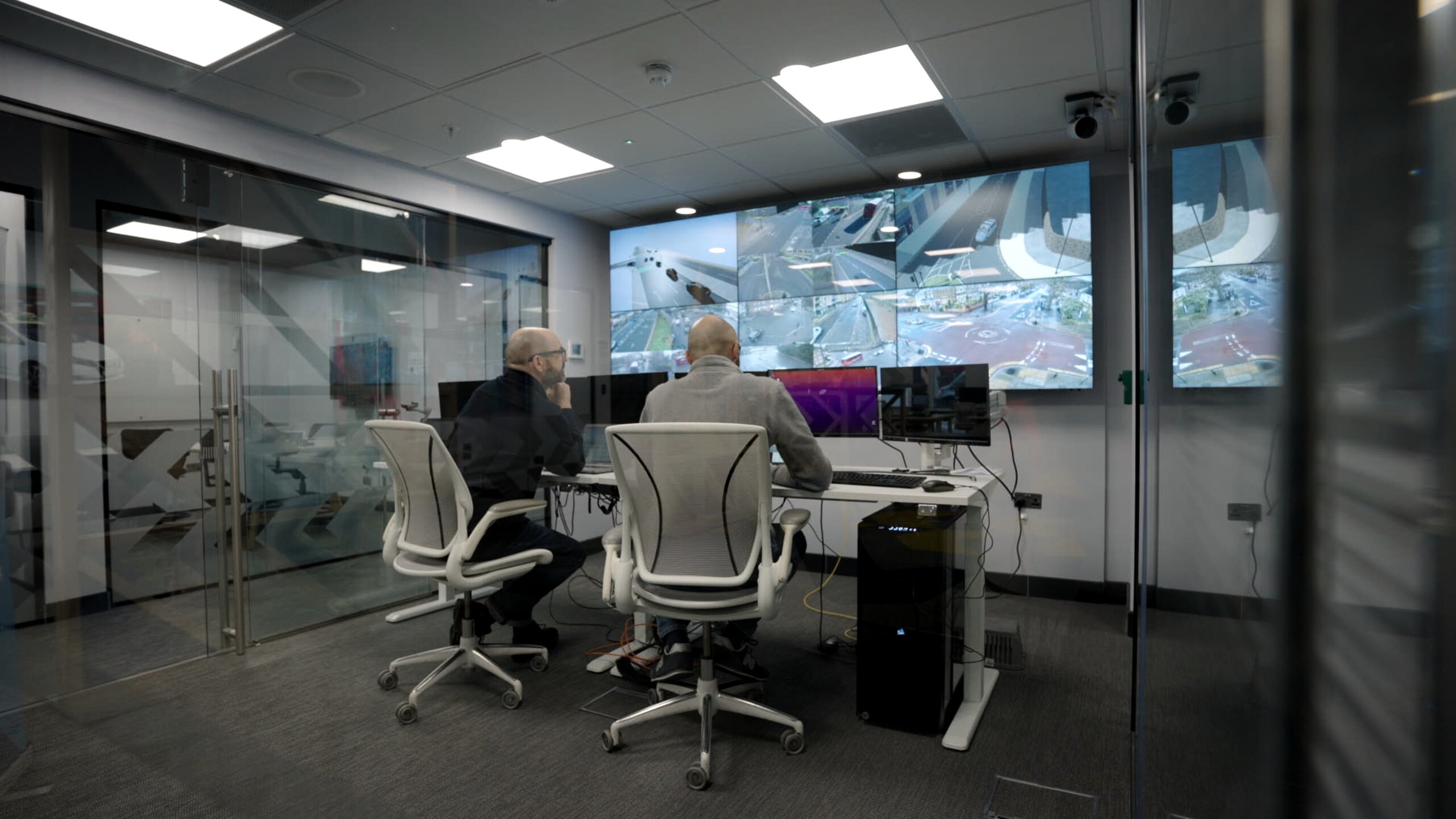



Discover CAM Scale-Up UK through Helix Geospace
Tom Gooderham outlines Helix Geospace’s experience participating in the CAM Scale-Up UK Programme.
Learn more about their speciality, the testing process and the results

Helix Geospace and the Zenzic CAM Scale-Up UK programme
Developing next generation antenna-based solutions for resilient, precision PNT and satellite communications

The demand for signal reliability and positional navigational accuracy will only increase as the CAM sector evolves. Traditional GNSS antennas are vulnerable to various interferences, ranging from urban canyons to malicious jamming.
GNSS technology is ubiquitous in modern life, most of us use it every day without a second thought and global economies depend on it. Knowing centimetre-exact location and nanosecond-accurate time data is critical for national infrastructure, commercial, and consumer applications. However, almost all PNT systems have inherent issues which cause inaccuracy and security breaches leaving the system susceptible to jamming and spoofing.
Helix’s array antenna, with its ability to rapidly steer beams, nullify interference, and employ advanced algorithms, offers a robust solution to these challenges. This innovative approach ensures that vehicles and mobility systems maintain continuous, accurate PNT data, which is crucial for safe and efficient autonomous operations.
SAE international, localisation requirements for autonomous vehicles states allowable positioning lateral error of 10cm for 95% of the time in urban areas.
Tom explains
“The big issue that is stopping connected and automated vehicles from being out in the public roads now is the issue around maintaining the position.
It’s fine having a corridor along a motorway, but the bigger issue is being able to operate within the urban environment.
What makes Helix Geospace Special?

Helix Geospace has a dedicated team, a principal scientist, PhD-qualified RF and software engineers, manufacturing engineers and technicians, procurement specialists and a dynamic commercial team, whom are all supported by outstanding administrative personnel.
Helix’s founder Dr. Oliver Leisten, has dedicated his professional life to progressing his studies of dielectric-loaded multifilar helix antenna technologies. Since 1990 he has worked on satellite receiver and antenna design: amassing over 40 patents and an impressive list of frequently cited publications. Starting with early system design, branching out from integrated circuit receiver design into miniature dielectric-loaded antenna design. Oliver now leads Helix’s accomplished engineers in developing arrays of small antennas to the task of positioning autonomous vehicles to sub 10cm accuracy within the urban environment.
Conventional patch antennas often suffer from poor positional performance due to their size, which essentially matches that of the vehicle. However, by deploying a helical antenna, with a dielectric core, then the positional error is effectively maintained within the antenna itself. The ceramic core further enhances accuracy by retaining energy within the antenna, thus refining positional accuracy to unprecedented levels.
Tom Adds:
“When you put arrays of Helix’s Dielectrix antennas together, you increase the accuracy as you have several phase centres to pull together, making it tighter and more accurate.
So, when interference happens from one direction, you can reject that interference but maintain the positional awareness from the other directions.”
Helix Geospace’s Testing Journey
Characterising, testing and validating antenna arrays through CAM Testbed UK

Testing Helix’s technologies in environments closely mirroring real-world scenarios was paramount to their development process.
HORIBA MIRA’s anechoic chamber provided a controlled environment for Helix to simulate interference and jamming signals and allowed them to take EMC measurements of the antennas.
UTAC Millbrook provided a surveyed repeatable environment with a real-time kinematic RTK system, which was utilised to compare positional measurements to validate accuracy.
Smart Mobility Living Lab: London gave Helix access to a Nissan EV 100 test vehicle outfitted with a NovAtel true system. Coupled with access to a meticulously surveyed, datum referenced open road environment, this provided a realistic testing ground for evaluating Helix’s technologies in real-world driving conditions.
Tom elaborates
“The London City area provides a really great opportunity for testing purposes. There’s the urban jungle environment, we’re we have really big high-rise reinforced concrete steel structures, that provide complex multi path reflections, which typical antennas in navigation systems really do struggle with.
5G interference is a also big issue within the urban environment and here is a great location with TV towers and lots of 5G transmitters to be able to actually simulate and test this in a proper real working environment.
By utilizing our arrays what we’ve shown is that we can improve the accuracy of the overall navigation system.”
What does success look like?

This program has enabled Helix Geospace to start development and collaboration with manufacturers of receivers, leading to interest from other key players.
Rigorous testing has enabled them to validate their processes, providing a solid foundation for optimizing future solutions tailored to autonomy.
At the forefront of innovation, Helix is actively addressing real-world challenges, positioning themselves as leaders in pioneering solutions for the future.
“If we achieve this, this is going to solve one of the biggest problems and hopefully open up the market to actually progress connected vehicles and auto automated vehicles.”
{{ teamMember.name }}
{{ teamMember.title }}